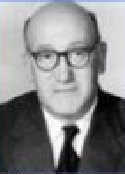RELATIVITY – joke or swindle?
von Louis Essen
RELATIVITY – joke or swindle?
Louis Essen
Quelle: ESSEN, L (1988): Electronics & Wireless World, p. 126-127, February 1988
Louis Essen re-states his view that Einstein’s theory of relativity contains basic and fatal flaws.
Some of your contributors find it difficult to accept my contention (WW October, 1978) that Einstein’s theory of relativity is invalidated by its internal errors. Butterfield for example
(WW February, 1987) denies that there is any duplication of units or any harm in obtaining results from thought-experiments. Moreover, if my contention is correct, the new experimental work described by Aspden (EWW, August, 1987) is not required to disprove the theory, although it might confirm that his assumptions were wrong. This is not to suggest that experimental results are not important but they should be considered as steps in the development of new theories.
Discussions about the theory tend to be very involved and your readers may be interested in a brief history of the subject which I wrote some time ago for a friend who wanted to know what the controversy was about and in particular what was the significance of the clock paradox.
The theory was an attempt to explain the result of an experiment which had been made to measure the velocity of the earth through space. Scientists reasoned that, since light is an electromagnetic wave travelling through space with a velocity denoted by the symbol c, and the earth is travelling through space with a velocity v, it should be possible to measure v by an optical experiment carried out in the laboratory. Michelson and Morley designed and used an interferometer for this purpose. A beam of light was split into two parts which were directed along the two arms of the instrument at right angles to each other, the two beams being reflected back to recombine and form interference fringes. The instrument was turned through a right angle so that, if one of the arms was initially parallel to earth’s motion, it became at right angles to this direction. It was expected that there would be a movement of the fringes, from which the velocity of the earth could be calculated, but no change at all was observed.
There have always been … critics: Rutherford treated it as a joke; Soddy called it a swindle; Bertrand Russell suggested it was all contained in the Lorentz transformation equations; and many scientists commented on its contradictions.
[…]
Hinweis auf die Fußnote: Dr. Louis Essen, D.Sc., F.R.S., has spent a lifetime working at the NPL on the measurement of time and frequency. He built the first caesium clock in 1955 and determined the velocity of light by cavity resonator, in the process showing that Michelson’s value was 17km/s low. In 1959, he was awarded the Popov Gold Medal of the USSR Academy of Sciences and also the OBE.
Siehe auch: RELATIVITY – joke or swindle?
.
———————————————————————-
Siehe auch vom Autor in diesem Blog:
The Special Theory of Relativity: a critical Analysis
Atomic Clocks Coming and Going
.
- 19. September 2013
- Artikel
